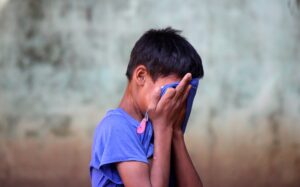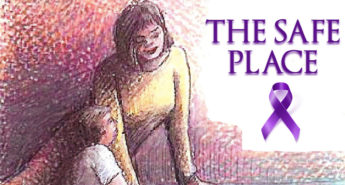 Any form of violence children are exposed to from or between their parents can have a traumatic effect on them. This includes physical violence such as hitting, pushing, choking, etc. as well as non-physical forms of violence such as screaming, name calling, tearing each other down, threatening harm, destroying objects, etc. Children also do not need to witness the event occur to develop symptoms of trauma, many times hearing the event happen or even just being aware that the event happened is enough. The most common symptoms of trauma in children are increased aggression, new fears, regressed development, anxiety, and depression.
Any form of violence children are exposed to from or between their parents can have a traumatic effect on them. This includes physical violence such as hitting, pushing, choking, etc. as well as non-physical forms of violence such as screaming, name calling, tearing each other down, threatening harm, destroying objects, etc. Children also do not need to witness the event occur to develop symptoms of trauma, many times hearing the event happen or even just being aware that the event happened is enough. The most common symptoms of trauma in children are increased aggression, new fears, regressed development, anxiety, and depression.
According to Graham-Bermann et al. in 2012, 92% of children exposed to domestic violence developed trauma related symptoms that lasted at least one month. After one month 71% of those children still showed symptoms and 20% progressed to a full PTSD diagnosis.
“This exposure occurs not only when the child sees or hears violence directly, but always when they are aware of it.” (Gonzalez, et al. 2014) To make this even worse according to Hillis et al. a study done in 2016 found that in North America (US and Canada) 56% of all children are exposed to some form of domestic violence. Therefore close to 1 out of every 3 children will have lasting trauma related symptoms due to exposure to domestic violence. The majority of this violence is non-physical and the child sees it between their parents rather than being on the receiving end.
The only person who knows if an event was traumatic is the child themselves; it has everything to do with how they perceive (view) the situation and how they cope with it. Even then they likely won’t be able to express it the same way an adult can, children tend to have limited language and trouble turning thoughts and feelings into words. Not everyone exposed to some violence will develop symptoms of trauma, but the more often it happens and the more intense or severe the incident is, the more likely it will be to progress into behavioral issues caused by trauma. The occasional fight with your kid is not going to bring out a trauma response, but constant exposure to parents fighting with each other with or without the child involved either physical or verbal, has a much higher likelihood to bring about symptoms associated with trauma.
References
Gonzalez A, MacMillan H, Tanaka M, Jack S, Tonmyr L. (2014) Subtypes of exposure to intimate partner violence within a Canadian child welfare sample: associated risks and child maladjustment. Child Abuse Neglect. 38(12).
Graham-Bermann, S. A., Castor, L. E., Miller, L. E., & Howell, K. H. (2012). The impact of intimate partner violence and additional traumatic events on trauma symptoms and PTSD in preschool-aged children. Journal of Traumatic Stress, 25, 393– 400. http://dx.doi.org/10.1002/jts.21724
Hillis S, Mercy J, Amobi A, Kress H. (2016) Global Prevalence of Past-year Violence Against Children: A Systematic Review and Minimum Estimates. Pediatrics. 137(3) https://doi.org/10.1542/peds.2015-4079.
Lieberman, A. F., Van Horn, P., & Ozer, E. J. (2005). Preschooler witnesses of marital violence: Predictors and mediators of child behavior problems. Development and Psychopathology, 17, 385–396. http://dx.doi.org/10.1017/S0954579405050182




Leave a Reply